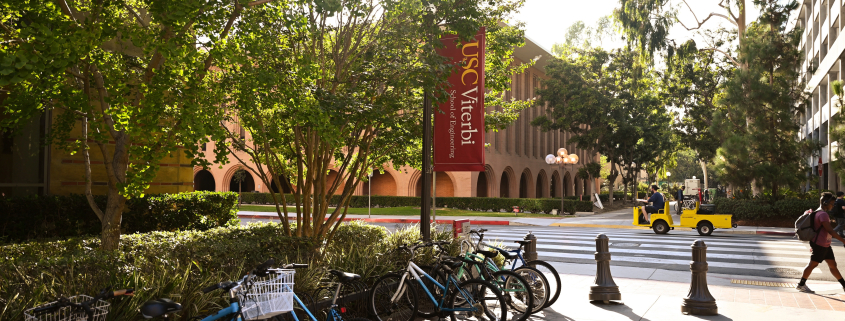Center to develop implantable device system

Researchers at the Viterbi School of Engineering are developing an open-source implantable device system to treat a variety of chronic diseases by monitoring and stimulating autonomic nerves at the new $11.7 million Center for Autonomic Nerve Recording and Stimulation Systems, marking USC’s cutting-edge development of emerging bioelectronic medicine technologies.
Funded directly by the National Institute of Health’s Common Fund, the center is one of two research institutes in NIH’s Human Open Research Neural Engineering Technologies Initiative of the Stimulating Peripheral Activity to Relieve Conditions program, co-led by Ellis Meng, Shelly and Ofer Nemirovsky chair in convergent bioscience, and two extramural researchers.
The autonomic nervous system is a part of the peripheral nervous system which controls involuntary physiologic processes like blood pressure, respiration and digestion. The implantable device system, also known as the CARSS system, will enable the therapeutic stimulation of autonomic nerves, by which doctors could collect information from patients and treat them by manipulating the communication between their nerves, organs and brain.
“The overall device is very much like … a peacemaker that has a central processing unit that picks up sensor information, but it also can provide electrical pulses to stimulate tissue,” Meng said. “From that, you can attach different connectors that each on the end of them has either a sensor, stimulating electrode, recording electrode or something else.”
In addition to the central processing unit, the CARSS system also includes an external charger and a Bluetooth controller — often a smartphone or tablet using the CARSS system software — that enables doctors to operate sensors or stimulate tissues and provide readouts for patients.
While there are other options for doctors to manipulate nerves, the CARSS system provides patients with precise, localized treatment for a vast range of chronic conditions in a less invasive way.
“You can try to [get to nerves] from the brain … but brain surgery is not something people want to do,” Meng said. “Whereas [the CARSS system] is a simple procedure somewhere else in the body, [which is] far less invasive. That’s something that is more acceptable.”
Despite academia’s interest in developing custom therapies with implantable devices, researchers’ lack of access to relevant technologies has impeded the field. Therefore, the end results of the CARSS system will be an open-source toolkit that can be re-adjusted to suit a vast range of bioelectronic medicine applications for different users.
“Currently, if researchers want to do something like this, they basically have to go around and beg and plead [with] companies that have existing implantable pulse generators,” Meng said. “So, the open-source part of [CARSS] is the key … All we are there to do is enable by providing a set of technologies that we think are broadly applicable.”
However, an open-source implantable device system is an unprecedented concept, and researchers hope to interact with the community of users to help improve the system during the process of the study.
“We have to understand who the community is, engage them and develop a whole communication infrastructure,” Meng said. “We want comments as we are working. Because if we don’t get that feedback early, we’ll produce something nobody wants.”
The development of the CARSS system is a collaborative effort from five nest projects. Projects 1 and 2 are responsible for developing the central processing unit; project 3 will pursue attachments for accessing larger nerves and conducting conventional measurements; Meng leads project 4, which tackles an extremely tiny nerve for which solutions do not yet exist; project 5, spearheaded by Maral Mousavi, assistant professor of biomedical engineering, and Hangbo Zhao, assistant professor of aerospace and mechanical engineering, will design two types of sensors for the system.
Zhao is developing implantable sensors that could accurately measure organs’ physical signals, such as temperature and motion, to inform doctors about organs’ functional status. For example, the sensor could monitor the expansion and contraction of the bladder.
“If something goes wrong, we know that we need to apply some electrical stimulation to the nervous system that controls the bladder so we can modulate the bladder movement,” Zhao said.
Mousavi said the second area of project five would be electrochemical sensing, which examines specific biomarkers and neurotransmitters like dopamine and serotonin levels within the environment of the peripheral nervous system. Mousavi’s team will also develop sensors that could record acetylcholine — a neurotransmitter associated with memory and learning which is particularly important in Alzheimer’s research.
Despite ongoing negotiations with NIH, the University officially opened the center at the end of September and researchers have started their projects with rosy anticipation.
“We are hoping to have these robust tools that can be put in the hands of many and to make this type of [resources], this type of studies more accessible,” Mousavi said. “What’s exciting to me is [that] we get to all work together and solve all technical problems from all different angles.”
Tyler Pak contributed to this report.

